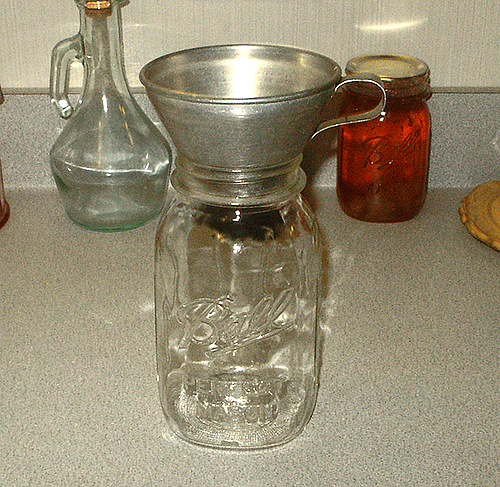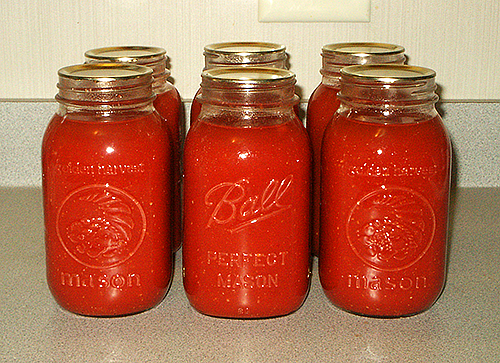This has been a lazy weekend for me. However, I decided today that I needed to tend to the task of making tomato juice. I knew with the recent rains the ripe tomatoes would not last long before they started to rot. I went into the back veggie garden and gathered all the ripe tomatoes; there were plenty that had started to rot and I discarded them.
Mum use to make her tomato juice by peeling the tomatoes and removing the core. She would then dice up the tomatoes and put them on to cook. One day her friend from next door happened to visit while she was preparing the tomatoes. When she saw Mum peeling the tomatoes, she told how she prepared her juice by puréeing the peelings into the juice; once puréed you will not know the peelings are in the juice, either for drinking or making soups. Mum tried it and from then on she just puréed the peelings into the juice and so have I.
 |
| Prestige Food Processor |
One of my favourite tools for food preparation is my Prestigetm food processor. It comes with a variety of stainless steel jars and cutters. I cut off the bottom of the tomatoes, remove the core, remove the little speck on the blossom end and slice the tomatoes into the food processor. I do not bother to remove the seeds. The food processor will break up the seeds along with the peelings. Once the peelings and seeds are puréed, I pour the juice into a large stainless steel cooking pot. Do not use aluminium pots as the acid in the tomato juice will leach the aluminium into the juice; use only stainless steel or glass cookware for preparing tomato juice.
 |
| Tomato Juice On The Cooker |
You need to cook the tomato juice slowly so as to not scorch the juice; if you allow any of the juice to burn on the bottom of the pot, the scorch taste will be throughout the juice. The nice thing about making tomato juice, unlike making tomato sauce or paste, is that you don't have to cook it as long. You are mainly wanting to bring the juice up to temperature to kill any bacterial that may be present; you are not trying to reduce the liquid as in making sauces.
 |
| Kilner Jar With Filling Funnel |
While the juice is cooking, prepare the bottling jars by washing them in hot water with a liberal amount of washing up liquid. I wash by hand because I don't own a dishwasher; I see no sense in washing dishes to load into a machine to wash them again. The type of jars used for bottling are Kilner jars. These jars come with a lid and separate band that is used to tighten the lid in place until the lid has sealed. The band is reusable; however, the lid is not; replacement lids are easily obtainable.
Before filling the jars, you need to sterilise them in a pot of boiling water. You also need to sterilise the lid before placing it onto the rim of the jar; the bands do not need to be sterilise. To make the task of filling the jars easier, you will want to use a funnel that is designed to fit the mouth of the jar you are using; jars come in standard width mouth or wide mouth. The wide mouth jars are nice for bottling tomatoes and other vegetables that you want to preserve whole. Don't fill the jar completely to the top, you need to leave a headspace. I fill my jars to the bottom of the top section containing the screw threads for the bands. Tighten the band down snugly, but don't over tighten as you may find it difficult to remove the band later. Allow the jars to cool overnight before trying to remove the bands. You can date your jars by writing directly on the lid with a permanent marker.
 |
| The Finished Product - Fresh Tomato Juice |
I do not process the jars in a pressure bottler since the tomatoes are a high acid food. However, here in the states the United States Department of Agriculture Extension Service recommends pressure processing the jars for twenty minutes at six psi. Since I cook my tomato juice for a longer period of time, and with the high acid content of the tomatoes, I have not found a need to pressure process the jars, and Mum never pressure processed her juice either. I do want to note that I am not recommending any particular way of processing tomato juice, I am simply writing about my own method of making and bottling tomato juice. If you are uncertain, I recommend that you follow the USDA Extension Services and pressure bottle your juice.
Feedback awaiting moderation
This post has 1 feedback awaiting moderation...
